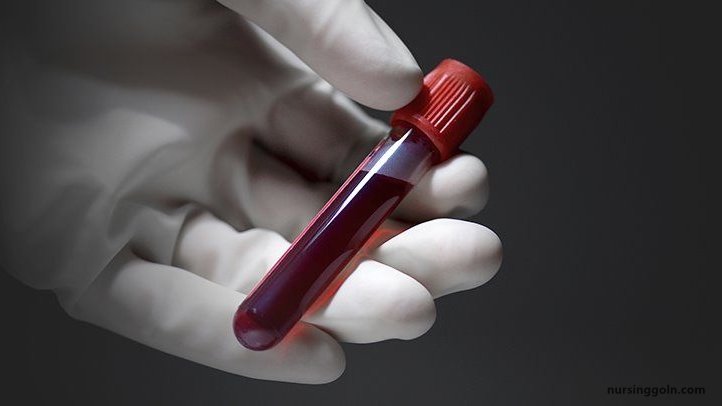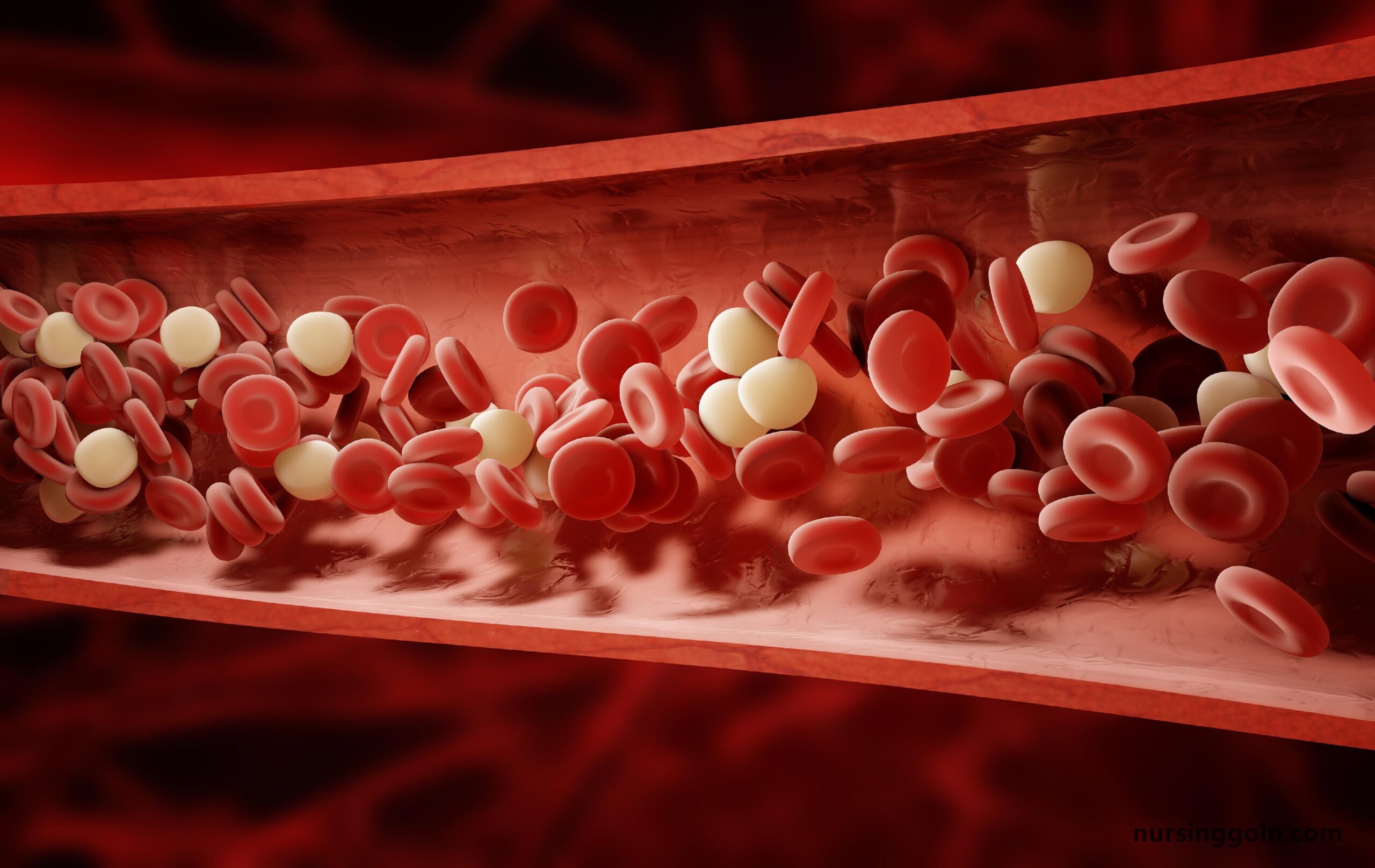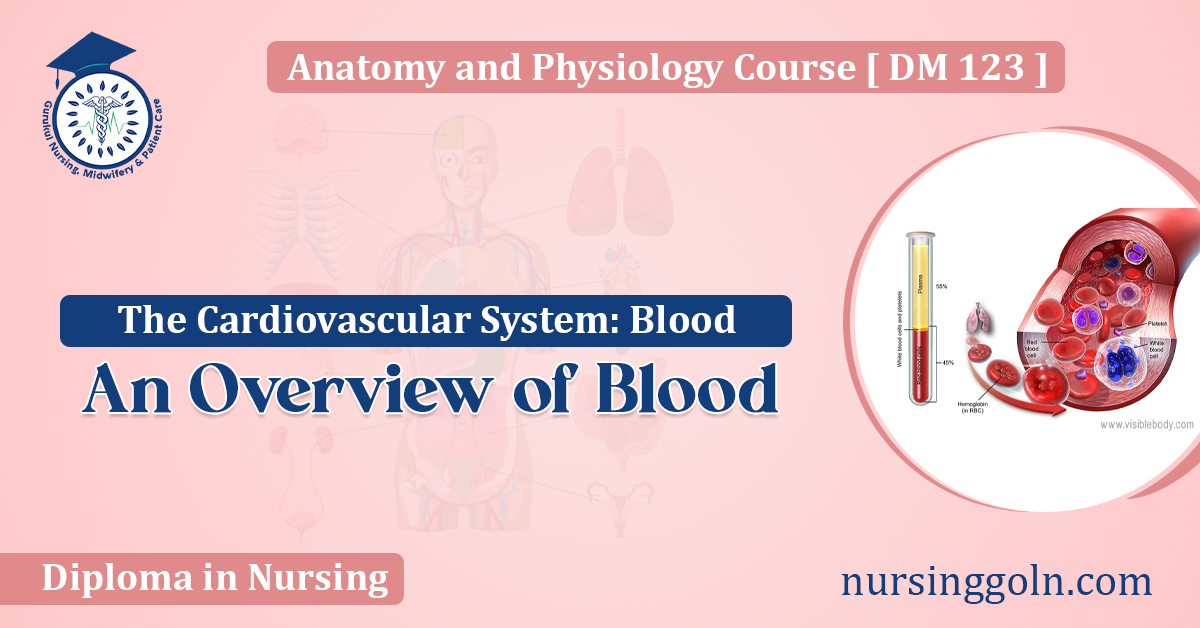Today our topic of discussion is ” An Overview of Blood “. Blood, often referred to as the ‘river of life,’ is the body’s primary internal transportation system. As a vital component of the cardiovascular system, it serves as a medium that not only delivers essential nutrients and oxygen to cells but also transports waste products away from those same cells. In this article, we delve deep into understanding blood, its components, its functions, and its significance in human health.

An Overview of Blood – The Cardiovascular System: Blood
1. Introduction: Blood in Perspective
Blood accounts for approximately 7-8% of human body weight, with an average adult having about 5 liters. It’s not merely a fluid but a complex mixture of cells, cell fragments, and solutes that play indispensable roles in ensuring our survival.
2. The Components of Blood
Blood can be broken down into four main components:
2.1 Red Blood Cells (RBCs) or Erythrocytes
- Structure: Biconcave, disc-shaped cells without a nucleus.
- Function: Primary carriers of oxygen (via hemoglobin) from the lungs to body tissues and aid in transporting carbon dioxide from tissues to the lungs.
2.2 White Blood Cells (WBCs) or Leukocytes
- Structure: Larger than RBCs and possess a nucleus.
- Function: Play a crucial role in the immune system, defending the body against both infectious disease and foreign materials. They can be further divided into:
- Neutrophils, Eosinophils, Basophils: Granulocytes containing granules in their cytoplasm.
- Lymphocytes: Central to the immune response, they produce antibodies.
- Monocytes: Become macrophages and consume pathogens.
2.3 Platelets or Thrombocytes
- Structure: Small, irregularly-shaped cell fragments.
- Function: Vital for blood clotting. They gather at a wound site and stick together, sealing off most injuries.
2.4 Plasma
- Structure: Yellowish liquid, comprising about 55% of blood volume.
- Function: Serves as the medium in which cells and platelets are suspended. It contains water, salts, enzymes, hormones, waste products, and proteins like albumin, globulins, and fibrinogen.

3. The Functions of Blood
Beyond its components, the significance of blood is best understood by recognizing its multifaceted functions:
3.1 Transport
Blood serves as the primary transportation medium, carrying:
- Oxygen from the lungs to tissues.
- Nutrients from the digestive system to cells.
- Waste Products like urea and lactic acid to excretion sites.
- Hormones from endocrine glands to target organs.
3.2 Regulation
- Temperature: Blood helps distribute heat and regulate body temperature.
- pH Balance: It maintains the body’s acid-base balance, ensuring an optimal pH of around 7.35-7.45.
- Fluid Volume: Blood proteins regulate fluid balance, preventing excess fluid loss from blood vessels.
3.3 Protection
- Clotting Mechanisms: Prevent excessive bleeding following injuries.
- Immune Defense: WBCs and antibodies in the blood fight infections and foreign invaders.

4. Blood Groups and Transfusions
4.1 Blood Types
Based on the presence or absence of specific antigens and antibodies, human blood is classified into four main types: A, B, AB, and O. The Rh factor further categorizes these into positive or negative types.
4.2 Transfusions
Transfusing compatible blood types is crucial to prevent adverse reactions. Type O- is the universal donor, while AB+ is the universal recipient.
5. Disorders of the Blood
Blood-related disorders can significantly impact health:
5.1 Anemia
A condition where the blood lacks enough RBCs or hemoglobin, leading to reduced oxygen transport.
5.2 Leukemia
A group of cancers that start in blood-forming tissues, leading to high numbers of abnormal WBCs.
5.3 Hemophilia
A genetic disorder that impairs the blood’s ability to clot.
5.4 Thalassemia
A hereditary disorder causes the body to produce an abnormal form or insufficient amounts of hemoglobin.
6. Diagnostic and Therapeutic Advancements
From blood tests that provide insights into overall health to therapies like bone marrow transplantation for conditions like leukemia, our understanding and capabilities concerning blood have evolved remarkably.

7. Conclusion
Blood, in its ceaseless flow, is a testament to the marvel that is the human body. It’s not just a medium but a message, carrying tales of our health, our genetic heritage, and even our evolutionary past. Understanding its intricacies offers a window into the complexities of human health and the broader tapestry of life.
Read more:
